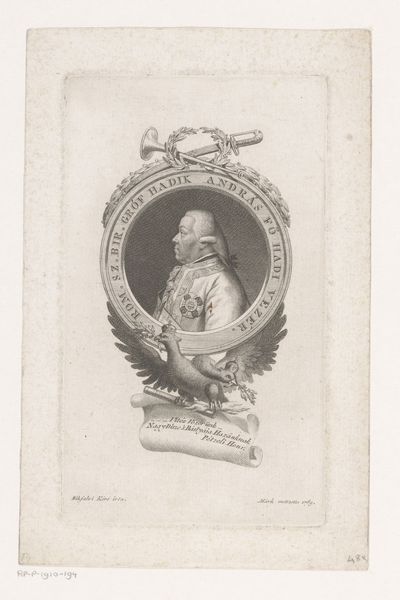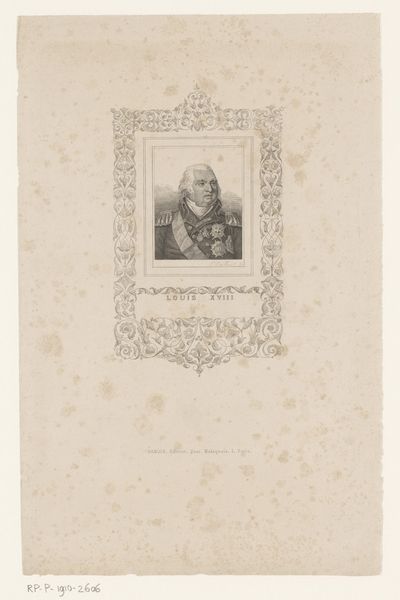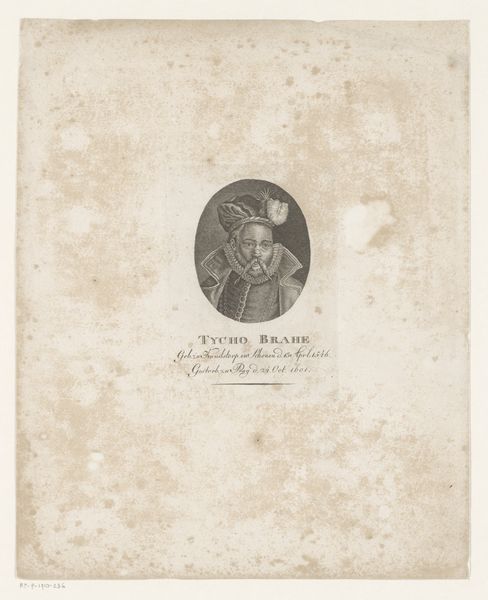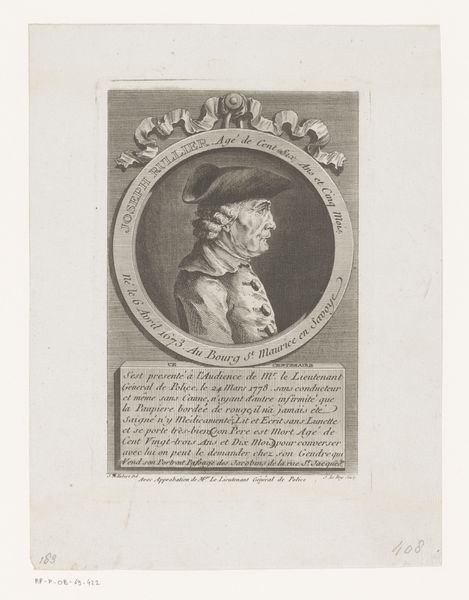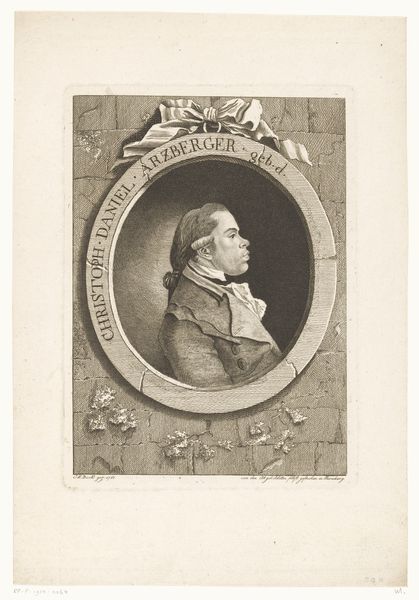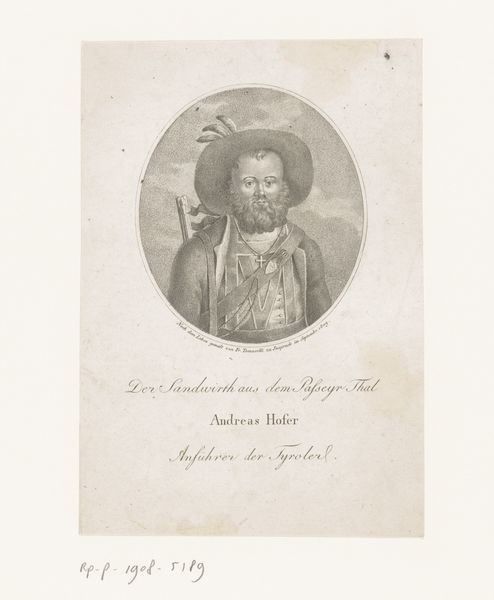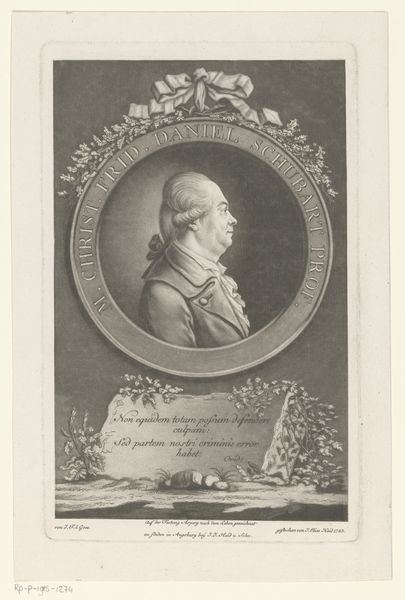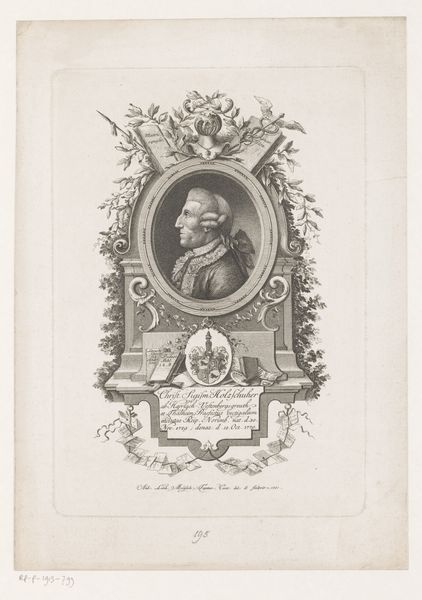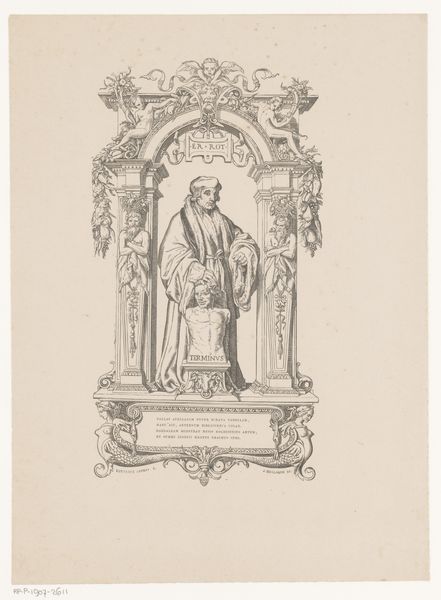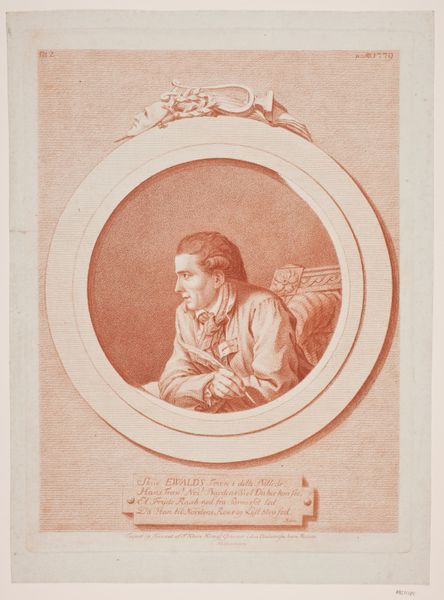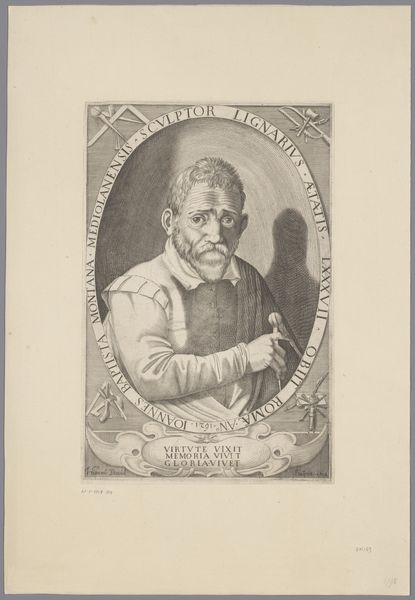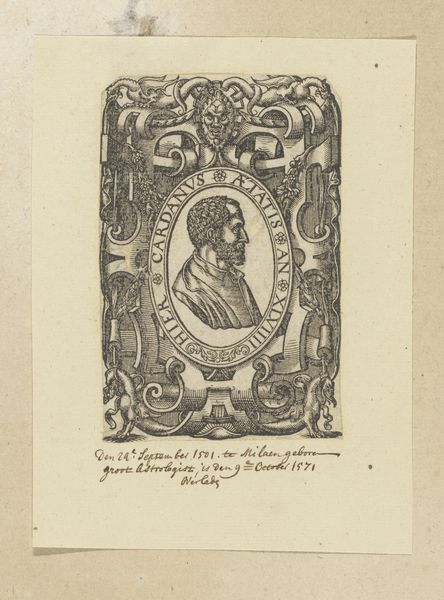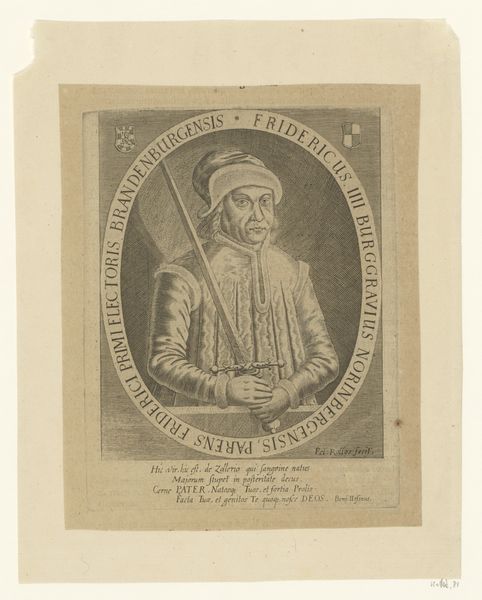
Dimensions: height 302 mm, width 215 mm
Copyright: Rijks Museum: Open Domain
Curator: Let's turn our attention to "Portret van George van Egmont," a print dating back to around 1860. What's your initial response to it? Editor: It feels austere, yet elegant. The circular frame, the stark contrasts, and the detailed engraving create a rather formal and perhaps slightly aloof presentation of the subject. The circularity immediately creates dynamism that carries the viewer. Curator: Indeed. This print, an engraving, gives us a glimpse into the historical portrayal of George van Egmont. Note the level of detail achieved through the printmaking process, reflecting both artistic skill and industrial capability of the time. It also makes this sort of imagery quite available for reproduction and distribution. Editor: Absolutely. Consider the lines creating the textures of his clothing and beard; a masterful use of hatching and cross-hatching. How does the baroque style and the medium reflect the societal and cultural functions of this portrait? Curator: The engraving process, which necessitates careful planning and execution, resonates with the hierarchical structure of society during that period. This image not only commemorates Van Egmont but also serves as an example of power relations through representation. The coat of arms, inscribed text, and formal composition all contribute to his persona. Editor: The visual cues guide us, subtly enforcing order through geometric form and deliberate execution, which is characteristic of the baroque period. Do you find any specific details particularly striking or indicative of broader themes? Curator: The inscription around the portrait itself, in particular, reminds us how these pieces operated within a specific visual vocabulary and ideological framework of its era. Considering who could afford these types of objects sheds light on who they wanted these subjects represented. Editor: A poignant insight! So, to reiterate, this portrait is far more than just a likeness of a person. Curator: Precisely. It’s an emblem of material, status, skill, labor, and representation intertwined through production. Editor: In that case, paying close attention to this portrait through its historical techniques highlights the intricate exchange of formal components to evoke something entirely singular.
Comments
No comments
Be the first to comment and join the conversation on the ultimate creative platform.
